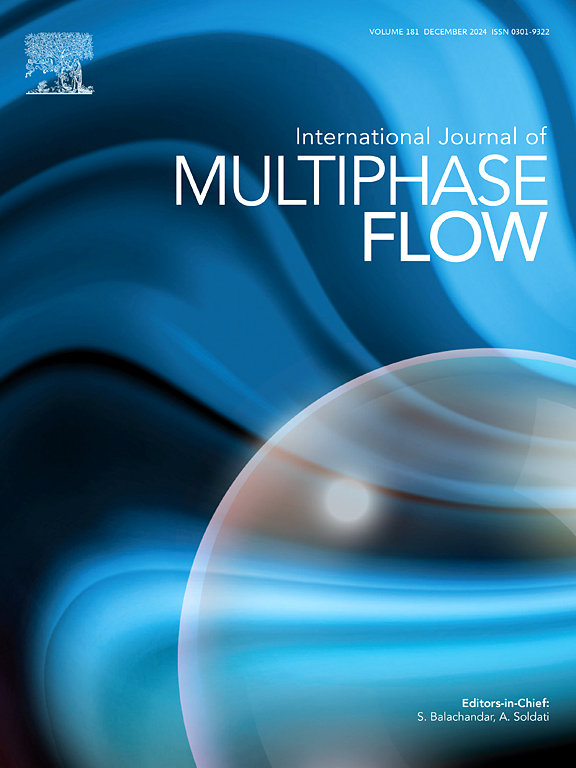Temperature response during rapid depressurization of CO2 in a pipe: Experiments and fluid-dynamics modelling
IF 3.8
2区 工程技术
Q1 MECHANICS
International Journal of Multiphase Flow
Pub Date : 2025-07-10
DOI:10.1016/j.ijmultiphaseflow.2025.105330
引用次数: 0
Abstract
The temperature evolution of during full-bore pipe depressurization events is relevant for risk assessment, e.g., for transport in the context of capture and storage (CCS). We analyse and model the temperature evolution for four different initial temperatures between and at supercritical pressures. All the experiments showed an analogous temperature evolution, reaching similar minimum temperatures along the pipe. The warmer the initial temperature, the earlier dry-out and faster temperature recovery was observed. Also, the coldest experiment showed evidence of formation of more dry ice.
We employ the homogeneous equilibrium model (HEM) with different heat-transfer correlations and a two-fluid model (TFM) with different slip models in order to understand the observed data. The results indicate that the heat transfer changes significantly with different thermodynamic states for the . Also, the HEM and the TFM with a RELAP-type friction model performed reasonably well at the outlet and at the closed end of the pipe, but none of the tested models were able to fully describe the strong spatial and temporal gradients observed along the pipe during the depressurization.

管道中二氧化碳快速减压过程中的温度响应:实验和流体动力学模型
在全通径减压过程中,二氧化碳的温度变化与风险评估有关,例如二氧化碳捕集与封存(CCS)过程中的二氧化碳运输。我们分析并建立了超临界压力下T0=4.6°C和T0=40°C四种不同初始温度的温度演化模型。所有的实验都显示出类似的温度演变,沿着管道达到相似的最低温度。初始温度越高,干燥越早,温度恢复越快。此外,最冷的实验也显示了更多干冰形成的证据。为了理解观测数据,我们采用了具有不同传热相关性的均匀平衡模型(HEM)和具有不同滑移模型的双流体模型(TFM)。结果表明,不同热力状态下CO2的换热特性有显著变化。此外,基于relap型摩擦模型的HEM和TFM在管道出口和封闭端表现相当好,但测试的模型都不能完全描述减压过程中沿管道观察到的强时空梯度。
本文章由计算机程序翻译,如有差异,请以英文原文为准。
求助全文
约1分钟内获得全文
求助全文
来源期刊
CiteScore
7.30
自引率
10.50%
发文量
244
审稿时长
4 months
期刊介绍:
The International Journal of Multiphase Flow publishes analytical, numerical and experimental articles of lasting interest. The scope of the journal includes all aspects of mass, momentum and energy exchange phenomena among different phases such as occur in disperse flows, gas–liquid and liquid–liquid flows, flows in porous media, boiling, granular flows and others.
The journal publishes full papers, brief communications and conference announcements.

 求助内容:
求助内容: 应助结果提醒方式:
应助结果提醒方式:


